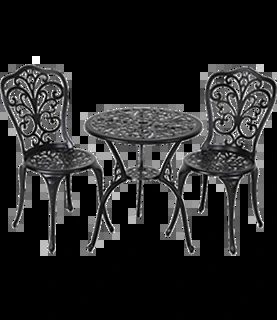ornamental cast iron manufacturers
The Craft of Ornamental Cast Iron Manufacturing
Ornamental cast iron has been a significant part of architectural and decorative design for centuries. Renowned for its aesthetic appeal and durability, this material can be found in various applications, from intricate garden furniture to monumental structures. The journey of ornamental cast iron manufacturing is a blend of artistry, engineering, and tradition, making it a fascinating subject for both enthusiasts and professionals alike.
The Historical Roots
The art of casting iron dates back to ancient civilizations, but it was during the Industrial Revolution in the 18th and 19th centuries that ornamental cast iron truly flourished. Manufacturers began to recognize the potential of iron not just for its strength and versatility but also for its ability to be cast into elaborate designs. This period saw the emergence of various cast iron products such as railings, gates, and columns, which adorned buildings and parks, showcasing craftsmanship that reflected the era's architectural styles.
The Manufacturing Process
The creation of ornamental cast iron involves several key steps. Firstly, a detailed pattern is crafted, often from wood or metal, to create the mold. This pattern must be meticulously designed to ensure that the final product captures the intricate details that define ornamental cast iron. Once the pattern is ready, sand is mixed with clay and water to form a mold. This mixture is packed around the pattern to form a cavity that will take the shape of the final product.
After the mold is prepared, molten iron is poured into the cavity, a process known as casting. The temperature of the molten iron is critical, usually maintained between 1,400 to 1,500 degrees Celsius. Once the iron cools and solidifies, the mold is broken away, revealing the cast piece. The next steps involve cleaning and finishing the product, which may include polishing, painting, or applying protective coatings to enhance durability and aesthetics.
ornamental cast iron manufacturers

The Importance of Design
In ornamental cast iron manufacturing, design plays a crucial role. Manufacturers often collaborate with architects and designers to create unique pieces that harmonize with their intended environments. The designs can be classical, reflecting Victorian or Gothic styles, or contemporary, showcasing modern artistic expressions. The creativity involved in these designs is what distinguishes one manufacturer from another, making the selection of a manufacturer an important consideration for anyone seeking bespoke ornamental cast iron products.
Sustainable Practices in Modern Manufacturing
With the growing focus on sustainability and environmentally responsible practices, many ornamental cast iron manufacturers are adopting green approaches in their production processes. This includes using recycled iron, minimizing waste, and employing energy-efficient techniques. Such practices not only reduce the environmental impact but also align with consumer preferences for sustainable products.
Conclusion
Ornamental cast iron manufacturing is an extraordinary intersection of art and engineering. The beautiful and durable pieces created through this process continue to enhance our public and private spaces, adding character and elegance. As technology and design trends evolve, the industry adapts, staying relevant while honoring the traditional craftsmanship that has defined ornamental cast iron for generations. For those in search of high-quality, aesthetically pleasing, and durable designs, ornamental cast iron stands out as a timeless choice, embodying both history and innovation.
In a world increasingly driven by mass production and ephemeral trends, the artistry involved in ornamental cast iron remains a testament to the value of skilled craftsmanship and thoughtful design. Whether it’s a classic bench in a public park or an ornate fence around a private residence, each piece tells a story, reflecting the legacy of its creators and the aesthetic ideals of its time. As we appreciate these beautiful ironworks, we also celebrate the enduring legacy of the artisans who continue to sculpt beauty out of raw metal.
-
Wrought Iron Components: Timeless Elegance and Structural StrengthNewsJul.28,2025
-
Window Hardware Essentials: Rollers, Handles, and Locking SolutionsNewsJul.28,2025
-
Small Agricultural Processing Machines: Corn Threshers, Cassava Chippers, Grain Peelers & Chaff CuttersNewsJul.28,2025
-
Sliding Rollers: Smooth, Silent, and Built to LastNewsJul.28,2025
-
Cast Iron Stoves: Timeless Heating with Modern EfficiencyNewsJul.28,2025
-
Cast Iron Pipe and Fitting: Durable, Fire-Resistant Solutions for Plumbing and DrainageNewsJul.28,2025
-
 Wrought Iron Components: Timeless Elegance and Structural StrengthJul-28-2025Wrought Iron Components: Timeless Elegance and Structural Strength
Wrought Iron Components: Timeless Elegance and Structural StrengthJul-28-2025Wrought Iron Components: Timeless Elegance and Structural Strength -
 Window Hardware Essentials: Rollers, Handles, and Locking SolutionsJul-28-2025Window Hardware Essentials: Rollers, Handles, and Locking Solutions
Window Hardware Essentials: Rollers, Handles, and Locking SolutionsJul-28-2025Window Hardware Essentials: Rollers, Handles, and Locking Solutions -
 Small Agricultural Processing Machines: Corn Threshers, Cassava Chippers, Grain Peelers & Chaff CuttersJul-28-2025Small Agricultural Processing Machines: Corn Threshers, Cassava Chippers, Grain Peelers & Chaff Cutters
Small Agricultural Processing Machines: Corn Threshers, Cassava Chippers, Grain Peelers & Chaff CuttersJul-28-2025Small Agricultural Processing Machines: Corn Threshers, Cassava Chippers, Grain Peelers & Chaff Cutters












